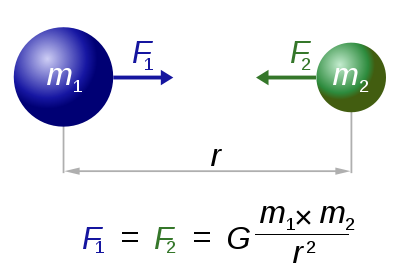Pressure with gravitational contribution p+ // mechanical of fluid // basic essentials #2

Source of image of pixabay
In this opportunity, I bring to them the basic essentials of the pressure with gravitational contribution p, giving him continuity to the basic essentials of the mechanics of fluid.
it is necessary to be known that following the static pressure is the one that has a fluid, independently of the speed of the same one, and that can measure oneself by means of the use of pipes piezométricos, where the entire pressure that exercises a fluid, good is gaseous or liquid is defined as the sum of the static pressure and the dynamic pressure.
That's why in analysis of application we have, that the pressure of the liquid to a certain depth does not depend on the entire mass or the entire volume of the liquid. The expression of pressure of above is easy to see for a straight column and without obstacles, but not so obvious for the different different cases point of geometry applied according to the case, that's why it is mentioned of that the pressure of the liquid to a certain depth does not depend on the entire mass or the entire volume of the liquid.
applied Nomenclature.
- P1 and P2 the correspondents to the initial and final sections (in sense of the current) of a complex system that implies accidents and mechanisms.
- P1 and p2, the correspondents to any section and to the ends of a straight stretch, respectively.
- pa and pd, the same as earlier and after a meter or any accident.
- pA and pD, that of admission and discharge of bombs and compressors.
Departing from this definition of the nomenclature, it is important to know that it is represented for P or p, the sum in any section of the static pressure and the gravitational force for surface unit (p+ = p + Pgz, being z the vertical, positive height in ascending direction). The name that receives this pressure P+ or p+ is not always expressed in the bibliography, and when it does, the names and symbols are different, which generates a big confusion.

The forces that the following one supports in balance to the above mentioned portion of fluid sound:
The weight, which is equal to the product of the thickness of the fluid, for his volume and for the intensity of the gravity, the force that exercises the fluid, on his low and top position in this one is, giving as balance: dp =-p gdy
(Image elaborated and edited for@centaurox)
Continuing with this topic, where this pressure with gravitational contribution is fundamental to bear it in mind, in case the fluid is a liquid, since in gases the influence of so much the pressure hydrostatics as of the potential energy it is despicable, and therefore, it is had that p=p+. With this definition of pressure with gravitational contribution, all the points of the bosom of a liquid at rest meet to the same pressure gravitational contribution, whereas they have different static pressure depending to the height to which he is.
Is necessary to base with in reference of this gravitational pressure, that a fluid is a substance capable of flowing, as liquids and gases and lacks fixed form so that he adopts the form of the receptacle that contains it. Both nevertheless have very different coefficients from compressibility, since a gas is compressed easily whereas the liquids are practically uncompressible, also the fluids serve as means continuos without hollow spaces in them.
As for the thickness it refers of a homogeneous material, is defined as his mass by unit of volume. His units in the S.I are a 1 kg ×m−3 and in the system c.g.s 1gr×cm−3. The thickness is represented by the letter ρ and comes defined like:
ρ =m/V
The thickness of the water is ρagua = 1gr × cm % − 3 and that of the water of the sea ρaguamar = 1,03gr × cm % − 3.
But if we go beyond the mechanics of the fluid, the counterfoil of study of the science divides as the genesis of everything this one answered from the physics, because the law of gravitation expresses itself in the shape of an equation that quantifies ' the gravity force ', which exercises the Earth with mass m on the Moon with mass mL, like the product of both masses, divided by the square of the distances from the center of the Earth up to the center of the Moon.
The gravity force of the Earth causes an acceleration of the Moon towards the Earth. The gravity force of the Moon causes an acceleration of the Earth towards the Moon; where both forces have the same intensity.

(
Mutual forces of attraction between two spheres of different size. In accordance with the mechanics newtoniana two forces are equal in module, but of the opposite sense; on having been applied in different bodies, they are not annulled and his combined effect does not alter the position of the joint centre of gravity of both spheres
Source of mastery of Wikimedia Commons
All the material particles and all the bodies are attracted mutually by the simple fact of having mass, in direct proportion to his masses. The gravity has a theoretical infinite scope, the study is where he is born the pressure with gravitational contribution p+, applied in the fluid thing, since it mentions previously that a fluid is a substance capable of flowing, as liquids and gases and lacks fixed form so that he adopts the form of the receptacle that contains it. Where it perceives the gravitational action where the fluid is contained or in circulation.
where the gravitational exercised pressure can act of the following way, dividing from the point of the gravity force it is always attractive, it is never repulsive and it has infinite scope. For very remote that are between yes two bodies, keep on experiencing this force, although weaker as it increases the distance, because the resultant one of the forces happens when the bodies there is not homogeneous the line of action of the component of this one himself in his physical form, since again I allude, that is fundamental to bear it in mind in case the fluid is a liquid, since in gases the influence of so much the pressure hydrostatics as of the potential energy it is despicable in the action that he takes or exercises, that's why his study applies a dynamics that an analysis different from the gravitational interaction. In accordance with this theory, the gravity can be understood as a geometric effect of the matter on the space - time, which we cannot come undone of her.
one speaks For that the dynamic pressure is void and the static pressure is equal to the entire pressure. Whereas the dynamic pressure acts only in the direction of the flow, the static pressure acts equally in all the directions and always in straight angle with all the surfaces that they contain to the fluid.
Conclusion.
I hope that this topic his content should serve as contribution, since the fluid is considered continue along the space, which it occupies ignoring therefore his molecular structure and the discontinuities associated with this one, mention also that Hydrostatics are the branch of the mechanics of fluids that studies the fluids in state of balance. Inside this branch of the mechanics of fluids there are immersed the beginning of Pascal and Arquímedes that in the daily life are much emphasized by his utility, who will speak in a next post.
On the other hand we are afraid in the study of fluids it happens under geometric configurations, in which can meet in hydroelectric dams, source, and also the influence of the stickiness of the fluid they influence pressure that this one exercises where I circulated or it is contained.
Bibliographical consultations.
Mechanics of the fluids and hydraulic for Jaime Ernesto Díaz Ortíz – 2006.
Applied mechanics of fluids - Page 26 for Robert L. Mott – 1996.
Physical cosmology - Page 429 for Jordi Cepa - 2007.
